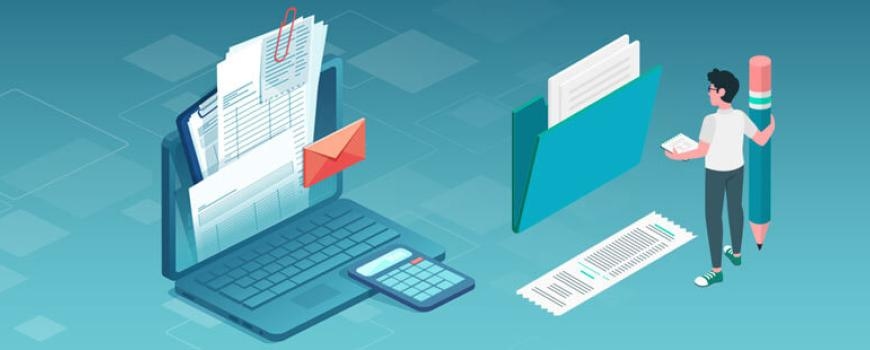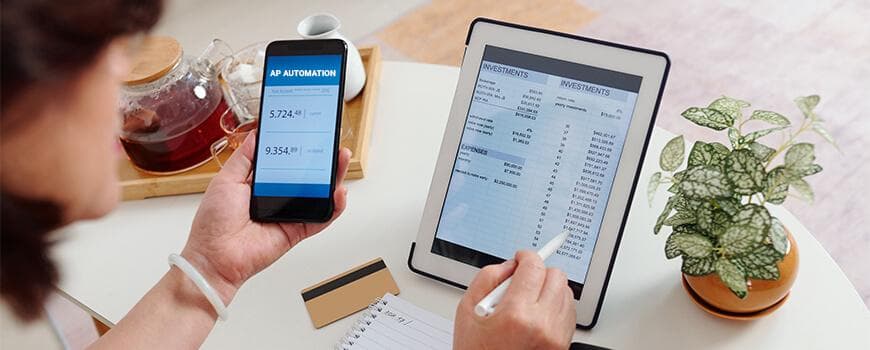Automating Accounts Payable Process: Ensuring Smarter Workflow with Foresight and Intelligence
14 January 2021


Shubham Agrawal
Product ManagerShubham Agrawal is a product manager at Applexus. He loves solving problems at the intersection of business, design & technology. With domain knowledge across retail, e-commerce...
Since a long time, invoice processing has been a back office procedure that involved immense human labor, wrapping up the life cycle of invoices from processing to vendor payments. But from late 2010s, there has been a huge demand for automating procure-to-pay solutions, including its component parts: e-procurement, invoice-to-pay and accounts payable due to the mandates adhering to the governmental and SOX compliances. With the rising concern in eliminating non-compliance issues and manual processing errors, speed and accuracy also became significant elements of consideration.
Today, it is not just a matter of "if" when it comes to Accounts Payable automation. As COVID-19 struck down the global market, the invoicing systems that were dependent on the manual processes just like many other business systems across multiple verticals also faced serious consequences. The pandemic thus made automation a future proof solution to evade the crisis efficiently, once and for all.
From cost savings to performance improvements to risk reduction, AP process automation produced endless benefits across the board for a function that became increasingly strategic in its outlook. And with time, according to industry experts as many as 72% percent of global companies projected to use automation to handle their invoice processing and accounts payable support functions.
Challenges with traditional Accounts Payable process
In order to understand how extensively automation has helped the Accounts Payable processes across the industries to ensure business continuity, we need to look at the challenges that existed before the dawn of automation within the AP system.
Individual Struggles
It is notified that AP clerks who spend much of their time scanning paper invoices or entering details manually are unlikely to be particularly content or satisfied employees. According to Ardent Partners, in 2020 an average of 22% of AP staffs time was spent on manual jobs such as invoice chasing, permits, price tracking and supplier inquiries. This amounts to much valuable time that you can unlock for the individuals to advance to more meaningful positions by eradicating the redundant jobs stated above.
Challenges in the Department
If these individual struggles are ringing true to you, then there’s much more in stock waiting to be addressed within your AP department. Your departmental productivity might have been compromised for a while if the department is still struggling with the traditional challenges of lengthy invoice and too much paper being involved. In such scenario, the total cost and time for an invoice to be processed would be much greater than it should be and your payable accounts would be susceptible to mistakes that are likely to trigger more delays.
Challenges for Business
In order to ensure that the money is not falling through the cracks, enterprises had to ensure a proper validation of the invoices through constant monitoring and cross-verification. On the absence of an effective invoice processing, your business is prone to get affected in multiple ways through non-compliance risk, lack of visibility of cash, dented profitability and late payment penalties. As a point of fact, lagging behind an invoice submission schedule on critical projects can potentially cause business a lot.

Leveraging Accounts Payable transformation though AI
Upright AP processes underpin far more than a happy, balanced team. They are the cornerstone of the success of any organization. So, how can you secure a successful and seamless AP workflow within your enterprise?

According to Accounts Payable Metrics that Matter in 2020, a clear majority (76 percent) of organizations point to smarter systems as the key to their effective growth. "Smarter" systems that combine process automation, cognitive intelligence, and real-time operations can enable the automated AP solution to self-learn from repeated use and offer the power of foresight and intelligence to business continuity.
Automation can streamline AP processes, driving major performance changes by receiving and processing invoices through different channels like Managed File Transfers (MFT), Electronic Data Interchange (EDI), Portal-based input, email with PDF attachments, and XML transfers in addition to eliminating data entry and manual processing errors. Automating invoice validation and exception handling enables AP department to identify and resolve errors early in the invoice process thereby reducing the processing time and the costs and risks associated with handling records to detecting mismatches to processing payments.

Key Business Benefits in AP Process Automation
Depending on department-level priorities and targets as well as those of the organization, there are many distinct performance indicators that AP can collect and calculate. Although it provide instant gains in efficiency and productivity on its own, AI can boost the entire accounts payable function in a number of ways when leveraged as part of an integrated AP solution.
Cost for single invoice processing
Usually, the total cost of handling a single invoice covers a number of costs, such as AP staff salaries, cost of supplies, and every other fund the organization spends on processing the invoices. With an automated workflow that eliminates manual touch points from the method, you can eliminate high invoice cost incurred through inefficient invoice approval workflow that is likely to be manual.
Invoice processing time
An inflated invoice cycle time will result in a high per-invoice cost and might lead to the company missing possible early payment discounts. With an AP automation solution, you can shrink the invoice cycle time to take advantage of these discounts, get more windows open up and streamline the process as a whole.
Exception rate for invoices
Missing or incorrect details, such as a lost/inappropriate vendor number in the invoice header or a price that does not equate to the sum contracted, results in exceptions. Through validation routines designed to flag errors earlier in the AP process, the percentage of exemptions can be decreased. More invoices will thus be passed through the approval process, opening the door to an increase in touchless processing.
Percentage of invoices processed "straight through"
Straight-through processing in AP is considerably cheaper and faster than any other workflow for invoice-approval, resulting in enormous efficiencies from an approval point of view. It also results in improved transparency for the AP process, ensuing greater visibility into invoice and payment details. This is because the automated invoice approval system "talks" to the appropriate PO, contract, etc. databases and can process a far greater amount of invoices than even the quickest AP professional.
Percentage of invoices related to the order for purchase
PO-based invoice processing within automated AP solutions help to link an invoice to a purchase order ('PO') that helps to provide a paper trail that, in addition to enabling budgeting and planning, can be followed for enforcement and spending control purposes. Getting a PO attached to an invoice therefore guarantees that a true cost is charged by the AP team, where a PO is acceptable, and allows greater monitoring and visibility of spending.
A recent study by SAPinsider indicates that some form of automation has already been adopted by about 50 percent of businesses across the globe. For Accounts Payable (AP), the survey found that AP-automated / AI systems were used by 71 per cent of organizations that are pioneers in the adoption of automated technologies. Undoubtedly, by leveraging the full spectrum of cognitive technology, businesses have plenty of opportunity to improve your process efficiency and an automated Accounts Payable solution is one of the most business-critical software stacks that you can have today.













